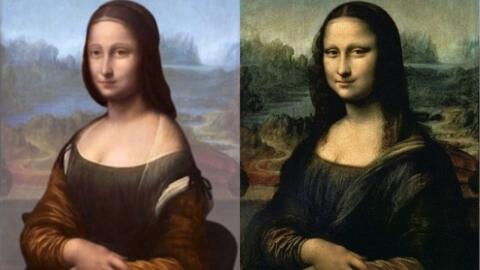Asthma, dental problems or even facial paralysis: since its painting at the beginning of the 16th century, the Portrait of Mona Lisa has never ceased to arouse the most varied speculation about the cause of the enigmatic smile worn by Mona Lisa, or, by her real name Lisa Gherardini, the wife of a rich Florentine merchant.
Discover our latest podcast
Hundreds of years later, a new hypothesis has emerged: that of an endocrinal illness…A theory advanced not long ago by a cardiologist and his team in an independent opinion column published in the September issue of the Mayo Clinic Proceedings revue.
The precise diagnosis established by doctors is that of hypothyroid, an illness that produces a deficiency in hormonal secretions from the thyroid gland. ‘The enigma of the Mona Lisa can be resolved by a simple medical diagnosis of an illness linked to hypothyroid’, confirms Doctor Mandeep Mehra, medical director of the Brigham Heart and Vascular Centre and Boston Women’s Hospital in the US.
A hypothesis confirmed by one of the co-authors of the works, Hilary Campbell, from the University of California in Santa Barbara: ‘In many ways, it’s the appeal of the imperfections from the illness that gives this masterpiece its mysterious realism and charm’.
An image diagnosis
Hypothyroid in fact produces numerous symptoms that doctors would have detected in Da Vinci’s work: fatigue, weight gain, skin dryness or even muscular weakness ‘leading to a smile that is hardly radiant’.
Another element of the diagnosis supports the multiple manifestations: hyperlipidaemia, an abnormally raised rate of lipoproteins in the blood, was already presented in 2004 by other specialists. But contrarily to the hypothesis ventured 14 years ago, doctors estimate that the hyperlipidaemia Mona Lisa would have suffered was in no way of genetic origin.
If this were indeed the case, she would not have in fact ever reached the presumed age of 63 years old. This illness would have therefore rather been a consequence of the hypothyroid from which Mona Lisa suffered. The ultimate argument in favour of this theory is the childbirth that Lisa Gherardini went through only a few months before being painted by Da Vinci. The pregnancy represents one of the possible causes of the hypothyroid.
A new theory…among many others!
As enticing and well-supported as it is, this new explanation is still very uncertain, to the admission of its authors themselves: ‘Of course, we should also admit that our unifying theory could also be as plausible as the multiple explanations provided, once each has been exposed to individual and collective biases’.
In this way Mona Lisa might have voluntarily pulled out her hair, hence its sparse appearance, and the yellowish skin tones could in the end be no more than the result of the painting’s deterioration over the course of centuries.
As for her smile, it could also simply be the sign of ‘experiments [conducted] by Da Vinci of a [pictorial] technique called sfumato, that allows you to blend colours and tones into each other without apparent distinctions’ concludes Hilary Campbell and Mandeep Mehra.
Five centuries after its birth, it seems that the symbolic masterpiece housed these days at the Louvre will retain a large part of its mystery forever… A cryptic aspect that certainly contributes to its charm!















